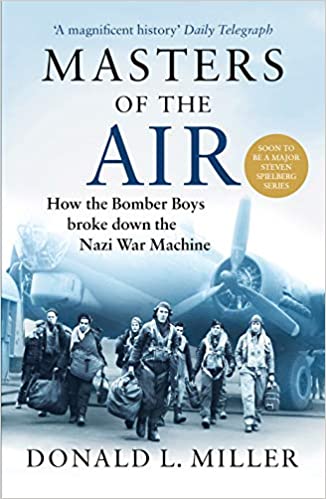B-17 Bomber Flying Fortress – The Queen Of The Skies P-51 Mustang
 English
English Deutsch
Deutsch
![P-51D Mustang // Wikipedia Commons [Public Domain]](https://b17flyingfortress.de/cms/wp-content/uploads/2015/12/P-51-361-600x314.jpg)
P-51D Mustang // Wikipedia Commons [Public Domain]
“It was very, very exciting to fly the P-51; she was really a fantastic aircraft. I could do what with her I wanted. You could for her turn fast turns and so although P-47 didn’t get faster than one after you had taken the old truck to trot once. The P-51 had a Rolls-Royce Merlin engine and this one sounded like a purring kitten, this one ran really sonorously. In the fight there was only a problem with the aircraft. If a ball had shot you a hole into the cooling system, you had to change course immediately because otherwise the cooling liquid would let the engine immediately freeze up. As it was also all other aircraft with tail spur wheel to move her on the taxiway a little difficult because you couldn’t see forwards, so you had to drive lurching from side to side turns all the time so if you rolled. But with her let himself be avoided well, we didn’t fly her we carried her like a suit”
USAAF 2nd Lieutenant Thomas Marsters
Originally the North American Aviation received the order to develop and to build a completely new fighter plane from the British air forces. The aircraft could already take off for his maiden flight after only 117 days.
The RAFs took 620 Mustangs and and a Malcolm cockpit hood rounded 1942 became the excellent flight cell by the excellent Merlin engine improved still further – the result was the P-5B with wing mounts to carry up to 2000 pounds of bomb load. After the P-5B and P-51C models were flown in the fight, the first reports reached North American Aviation.
Although the pilots absolutely liked the Mustang, found fault with her anyway, that the view would be impaired by the cockpit and the back trunk to behind and that the Malcolm hood wasn’t satisfactory particularly. To remove these problems decided North American, a drip form cockpit hood at the mustang to attach. With this hood which was already used by the RAFs the pilot had one for 360 degrees round circumspection. The engineers with North American designed the back part of the trunk newly, around him to adapt the Mustang. This model was confessed as P-51D and disposed ammunition of an improved engine, amplified wings and another two, in the wings appropriate machine-guns extra. Later models had a back bladder worm around stability problems of correcting. With a total output of 7956 pieces the P-51 became D in a larger quantity than all other Mustang models produced.
The significance of the P-51 for the American air offensive in Europe cannot be assessed highly enough. From the end of 1943 she was afraided of in a low as well as large altitude and empire accompanied bigger and bigger bomber currents to her aims deeply into the heart of the third party. She destroyed Luftwaffen, aircraft on the ground and in the air. P-51 Mustangs fired about 4950 for Luftwaffen lost of the thousand during the war alone. This is almost 49 per cent. After the second World War became the mustang to ground support missions in the Korean War used and served into 50 air forces of the whole world.
15,586 Mustangs altogether were built. Their main task consisted in carrying out Air Force as escort of a heavy bomber formation of the 8th of England from dayly attacks on Germany.
Specifications P-51D Mustang
Engine:
One 1,695-hp Packard Merlin V-1650-7 piston V-12 engine
Performance:
Maximum Speed: 437 mph; Ceiling: 41,900 ft. Range: 1300 miles
Weight:
Empty 7,125 lbs., Max Takeoff 12,100 lbs.
Measurements:
Wing Span: 37ft. 0.5in. Length: 32ft. 9.5in. Height: 13ft. 8in.
Armament:
Six 12.7-mm (0.5 inch) wing-mounted machine guns, plus up to two 1,000-lb bombs or six 127-mm (5 inch) rockets.
Buy books about the P-51 Mustang on Amazon.com*
- P-51 Mustang: Seventy Five Years of America’s Most Famous Warbird
- P-51 Mustang in Action – Aircraft No. 211
- Very Long Range P-51 Mustang Units of the Pacific War (Aviation Elite Units Book 21)
- Mustang Ace: Memoirs of a P-51 Fighter Pilot
- The 363rd Fighter Group in World War II: In Action Over Germany with the P-51 Mustang (Schiffer Military History)
* = CommissionsEarned. As an Amazon Associate I earn from qualifying purchases.





